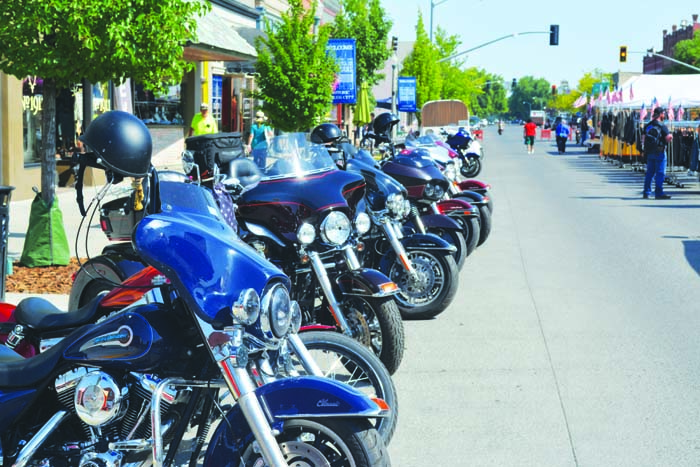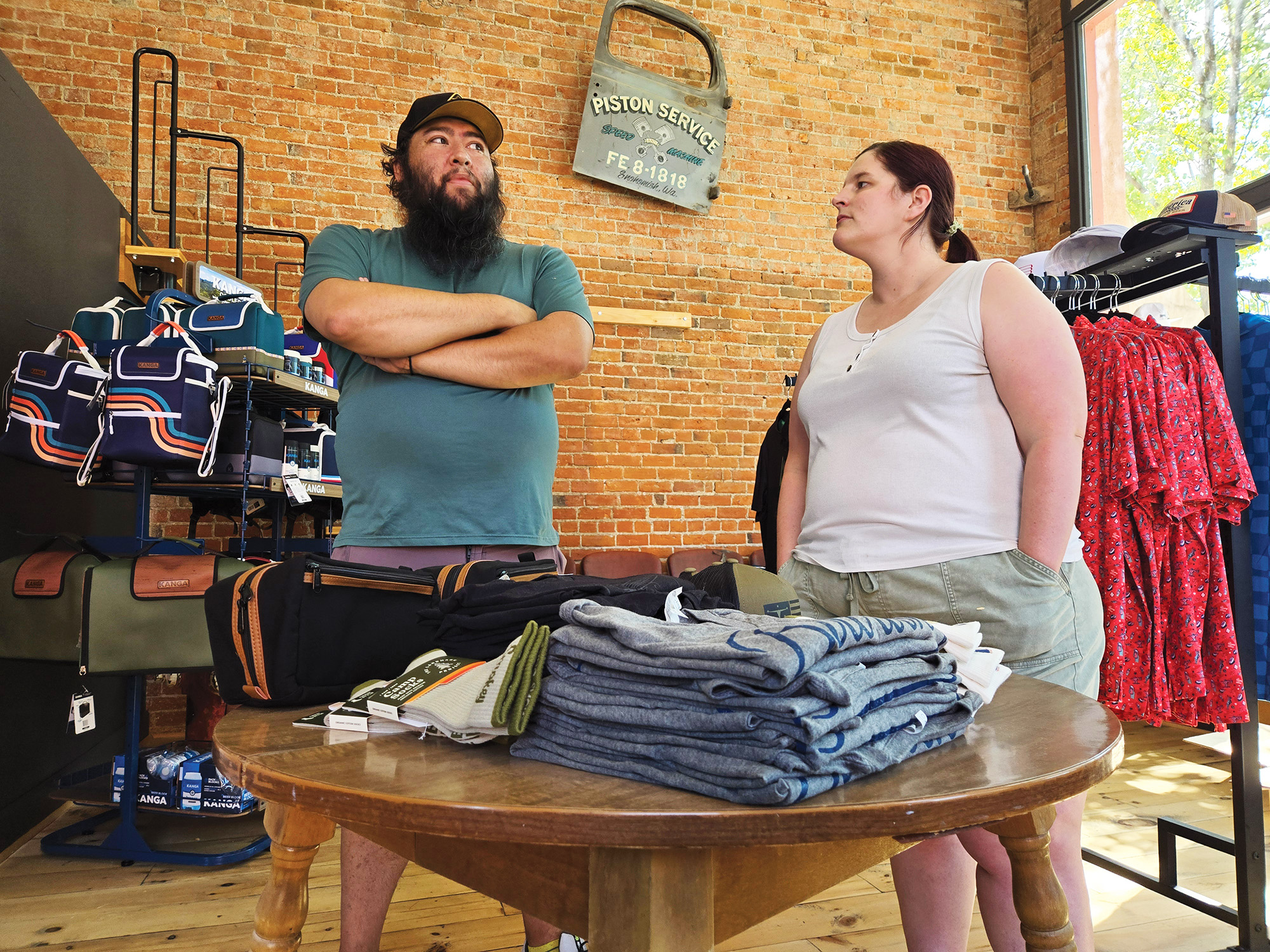COLUMN: The simple pleasure of going to the movies
Published 2:15 pm Friday, January 14, 2022
The epiphany arrived while I was lounging in a well-padded chair in the Eltrym Theater, watching Spider-Man soar around the Statue of Liberty, attached by gossamer threads.
Spider-Men, actually.
The latest film to feature the acrobatic arachnid-human hybrid superhero — “Spider-Man: No Way Home” — in fact boasts a trio, bringing together the three actors who have portrayed the character in the cinematic series — Tobey Maguire, Andrew Garfield and, most recently, Tom Holland.
I have seen only a few of the several films during their nearly two-decade run, but I’m familiar enough with the story to not feel especially befuddled as the plot progresses.
It was an entertaining movie that seemed to pass, as engrossing films do, much more rapidly than its running time of more than two and a half hours suggests.
My bladder, alas, which has considerably less patience than it did during its carefree youth, reminded me, with its customary urgency, about the soda I had guzzled even before the previews were finished.
(Ice-chilled and carbonated liquid being, of course, a necessary chaser when you’re gobbling the salty, slightly greasy popcorn without which no trip to the theater is complete.)
As I watched the three red-and-blue suited actors perform their computer-aided heroics during the film’s predictably spectacular climax, it struck me, with a slightly jarring suddenness, that Baker City residents have been seeing similar rousing conclusions to big screen epics, in this very space, for the better part of a century.
The Eltrym opened on June 27, 1940, at the northwest corner of First Street and Valley Avenue.
Its unusual name, so unlike the Rios and Roxys and Rivaltos that littered smalltown American downtowns during the 20th century, honors Myrtle Buckmiller. With her husband, Frank, Myrtle planned the theater’s construction. Sadly, she didn’t see its grand opening. Myrtle — Eltrym is her name spelled backward — died on Jan. 3, 1940.
A building 81 years old is not, to be sure, especially ancient by the standards of Baker City, which dates to 1864.
Several venerable structures, including St. Francis de Sales Cathedral, the Geiser Grand Hotel, the Baker Tower, Baker City Hall and the Baker County Courthouse, are each older than the Eltrym — by several decades in some cases.
Like the Eltrym, all of those, with the exception of the Baker Tower (which I find difficult to refer to as anything but Hotel Baker), serve essentially the same functions today as when they were built.
Yet theaters, it seems to me, are different — unique even.
Movies are a shared experience — the residents of a remote city in Northeastern Oregon watch the same scenes as New Yorkers. The Baker City native might have precious little in common otherwise with the Manhattanite, but when they each settle into their respective seats, and the house lights dim, the 3,000 miles between them, and the perhaps even greater gulfs in their backgrounds and their futures, disappear in the glow of the images that appear on the screen.
It wasn’t this cultural bridge, though, that I was thinking of as I watched the Spider-Men defy gravity (and, indeed, logic, but of course the temporary suspension of reality is among the great attractions of the cinema).
Rather I was pondering all those years and decades that have passed since 1940, that purgatorial year between the start of the great cataclysm in Europe and America’s descent into the maelstrom.
I imagined, as I crumpled my popcorn bag, entombing the drift of unpopped kernels before my urge for one more savory mouthful left me with an aching molar, about how many thousands of people had sat where I was sitting. I thought about how many movies they had watched, how many gasps of surprise at some plot twist, how many tears were shed during particularly poignant scenes, how many ounces of soda were expectorated during a comedic interlude.
(I have a distinct memory, while watching one of the “Austin Powers” movies at the Eltrym, of learning what it feels like to have 7-Up travel through the nasal passages. Cold. And tickly.)
The Eltrym’s history doesn’t quite extend back to the transition from silent films to “talkies,” but it’s close.
Most of the movies that are widely acclaimed as classics made their debut here, in the hinterlands of Oregon, just as they did in the great metropolises.
I imagine the marquee and all the titles that have appeared between its garishly colored lights, on warm summer nights and on winter evenings when the gleam struggled to penetrate the shifting flakes of a blizzard.
That one modest space, hanging over the sidewalk on the west side of First Street, marks the passage of time in its inimitable way, and welcomes us to come inside, where we know it will be dark and warm and smelling pleasantly of popcorn.
From “Citizen Kane,” which came out the year after the Eltrym opened, through “The Godfather” and “Star Wars” in the 1970s, “Harry Potter” a couple decades later, and so many dozens of others, before and since.
(A movie scene which perfectly captures this concept is in “Field of Dreams,” when Ray Kinsella, played by Kevin Costner, is strolling the downtown of Chisholm, Minnesota, at night. The movie is set in 1988, but Kinsella realizes he has, as a person can do in the fictional world of film, gone back in time. First he sees a poster for Richard Nixon’s reelection campaign, and then the camera focuses on the theater marquee — the Plaza, alas, not nearly so interesting as the Eltrym — which is advertising “The Godfather.” Both place the scene indubitably in 1972.)
The small town theater is not so common today as it was in decades past, supplanted in some cases by anodyne suburban multiplexes that have all the architectural charm of an East German apartment complex, and in others by the inexorable changes in the economy.
Lucky we are that the Eltrym persists.
In this one building, generations have joined in a grand American tradition. And it’s a tradition which, unlike so much else which has been rendered unrecognizable to our forebears by technology, in particular the digital sort, still bears its original name, so rich and so enticing in its possibilities.
Going to the movies.
Jayson Jacoby is editor of the Baker City Herald.







